AP Exam 2.2
1/49
Earn XP
Description and Tags
exam 2 questions
Name | Mastery | Learn | Test | Matching | Spaced |
|---|
No study sessions yet.
50 Terms
hepatic artery
In order to supply nourishment to liver tissue, which vessel must deliver blood to the organ?
the circulation returning from the lower body
If a patient is confined to bed and is unable to walk at all, which of the following will be seriously affected?
exchange vessels
Capillaries are also referred to as
diffusion
Which of the following is the most important method of capillary exchange?
all of these choices
which of the following types of tissues contains continuous capillaries?
collateral circulation.
The alternate route of blood flow to a body part through an anastomosis is called
blood colloid osmotic pressure.
The largest driving force for pulling fluid from the interstitial spaces back into the capillaries is
cardiac output
The volume of blood that circulates through the systemic (or pulmonary) blood vessels per minute is called
heart rate and stroke volume
Cardiac output is dependent on both
medulla oblongata
The cardiovascular center is located
hypertension
The most common disorder affecting the heart and blood vessels is
hepatic portal circulation
Nutrients from digested food enter the liver via the
coronary artiers
The branches from the ascending aorta that supply blood to the cardiac muscle are the
b tunica media
Which of the labeled layers in the diagram of the arterial wall consists mainly of elastic fibers and smooth muscle fibers?
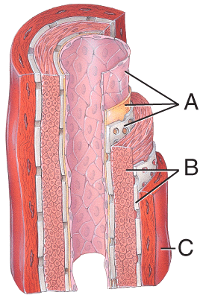
c
Which of the capillaries shown in the figure has an incomplete or absent basement membrane?
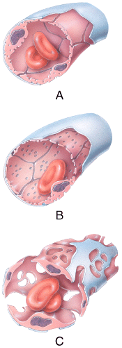
right subclavian artery
Which vessel in the figure is labeled “B”?
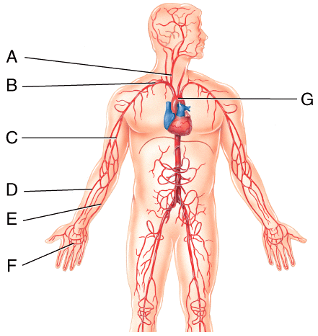
left femoral vein
Which vessel in the figure is labeled “B”?
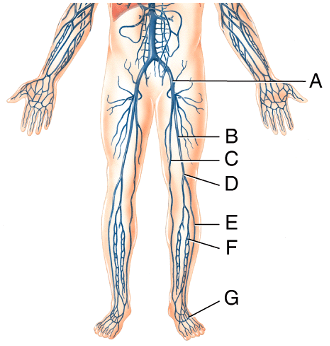
left gonadal vein
Which vessel in the figure is labeled “C”?
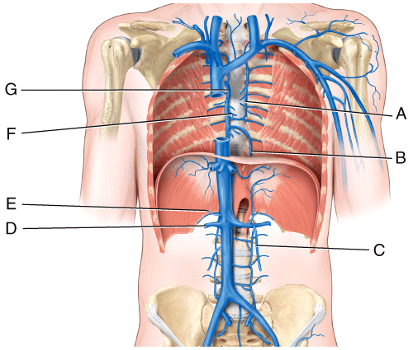
pluripotent stem cells
During embryonic development, blood cells are formed from
120/80
Normal blood pressure for a young adult male is less than
right ventricle to the left atrium.
The pulmonary circulatory route carries blood from the
immunocompetent
When B and T cells are fully developed and mature, they are described as being
Antigen
Which of the following induces the production of a specific antibody?
IgA
Which class of antibodies is mainly found in sweat, tears, breast milk and GI secretions?
Opsonization
Which complement system action makes microbes more susceptible to phagocytosis?
b
In the diagram, where do pluripotent stem cell originate?
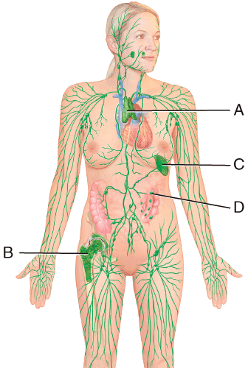
c
In the diagram which vessel drains lymph from the upper right side of the body into venous blood at the right subclavianvein.

c
In the diagram, which region would include B cells, follicular dendritic cells and macrophages?

immunodeficiency diseases
What class of disorders, including AIDS and SCID, involves the destruction of B and T cells resulting in the inability of the immune system to protect the body from pathogens?
Naturally acquired active immunity
Exposure to an infectious agent during your day-to-day activities leads to
IgM
Which class of antibodies in the blood and lymph indicates a recent invasion?
artificially acquired passive immunity
Which type of adaptive immunity will result from intravenous injection of immunoglobulins?
naturally acquired passive immunity
Which type of adaptive immunity will result from mother-to-baby IgA transfer via breast feeding?
Transfer of IgG from mother to fetus
Naturally acquired passive immunity is associated with which of the following?
mast cells
Which cells increase the permeability of blood vessels by releasing histamine?
hyaline cartilage
Which of the below tissues maintains open airways in the lower respiratory system?
All of these are factors that affect pulmonary ventilation
Which of the following is NOT a factor that affects pulmonary ventilation?
Functional residual capacity
Which of the following is the sum of the residual and the expiratory reserve volume?
respiratory rate
Which of the following is a factor that does NOT affect hemoglobin’s affinity for oxygen?
c
Where are the nasal conchae?
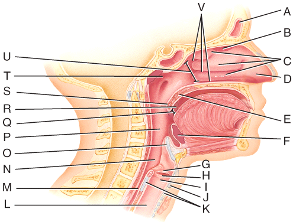
ischemic hypoxia
An individual suffers a blood clot in an artery that delivers blood to his leg. The leg begins to take on a blue hue, becomes colder than the rest of his body and he experiences numbness in the leg. He is most likely experiencing
left primary bronchus
What is line J pointing to?
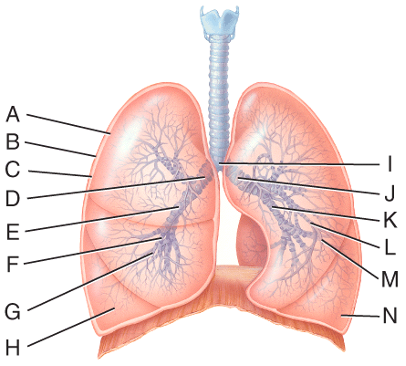
alveolar ducts
What are lines C pointing to?
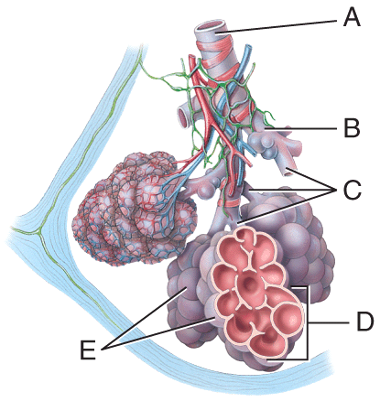
D. Alveolar macrophase
Which structure provides disease resistance within the lungs?
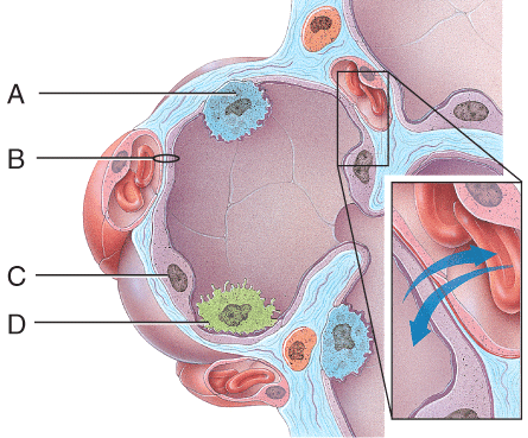
e
Which area in the figure is the sum of the tidal volume and the inspiratory reserve volume?
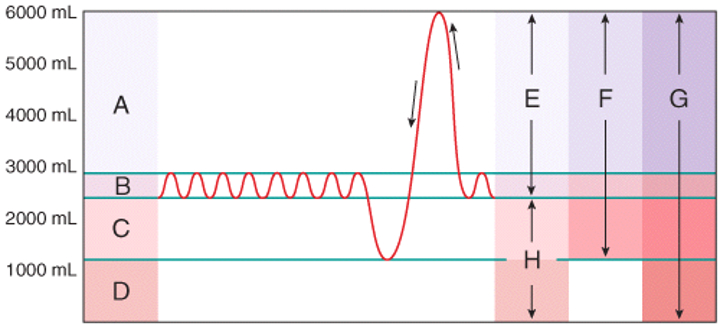
coughing
Which of the following is a long drawn and deep inhalation followed by a complete closure of the rima glottidis, which results in a strong exhalation, pushing the rima glottidis open and sending a blast of air through the upper respiratory passages?
otolaryngology
The branch of medicine that deals with the diagnosis and treatment of diseases of the ears, nose and throat is
rhinoplasty
The surgical procedure used to cosmetically reshape the nose or to correct a deviated septum or fracture of the nose is called
tidal volume
The volume of one breath is called the
atmospheric pressure
The sum of the partial pressures of nitrogen, oxygen, argon, carbon dioxide, water vapor and other gasses in our environment is called